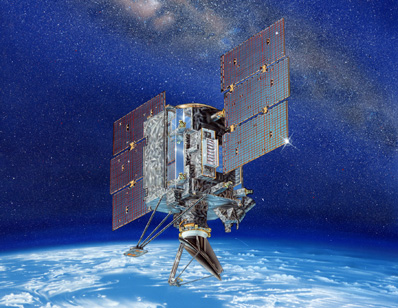GlobeCast will provide its Content Exchange solution to the French multihull yacht Crepes Whaou for the 9th annnual Transat Jacques Vabre transatlantic sailing competition.
[SatNews – 11/06/2009]
Microsoft Corp. selects partners Akamai Technologies and iStreamPlanet work with Microsoft to provide integrated end-to-end solution to deliver live and on-demand video of Vancouver Olympic Winter Games.
[SatNews – 11/06/2009]
Avanti’s HYLAS arrives at ISRO facility in India where it will be integrated into the platform and prepared for launch, on schedule for 2Q launch in 2010.
SatNews – 11/05/2009]
Globalstar opens new gateway expanding coverage into oil rich Nigeria and Western Africa.
[CNNMoney – 11/05/2009]
ViaSat announces new contract awards of $225.7M in second quarter, and discusses plans to utilize compelling capacity on upcoming ViaSat-1 satellite for recently acquired WildBlue’s resources and distribution.
[SatNews – 11/05/2009]
DirecTV’s third-quarter profit up slightly, although customer cancellation rate may signal a coming end to the insulation from the competitive fray DirecTV has enjoyed the past several quarters.
[Wall Street Journal – 11/05/2009]
RapidEye announces frame contract with European Space Agency to provide satellite imagery for monitoring and change detection in areas prone to natural disasters.
[SatNews – 11/05/2009]
Eutelsat reports record revenue growth of 11.6% in first quarter 2009-2010.
[Reuters – 11/05/2009]
Sirius XM announces positive adjusted income for fourth quarter in a row, with increased subscribers and reduced satellite costs.
[Reuters – 11/05/2009]
Harris Corp will build satellite broadband system for U.S. Navy.
[Orlando Business Journal – 11/04/2009]
SES WORLD SKIES announces agreement with Solomon Telekom for satellite capacity on NSS-9 to provide satellite broadband across the Solomon Islands.
[SatNews – 11/04/2009]
Cypress state-of-the-art CMOS image sensors specially designed for high accuracy star tracking used on European Space Agency’s Proba-2 satellite launched on November 2.
[Reuters – 11/04/2009]
Hughes Communications reports record subscriber growth for its satellite broadband business, with broadband services revenue up 16% and total revenue up 12%.
[Reuters – 11/04/2009]
Vizada receives award from Inmarsat for highest revenue growth of all Inmarsat mobile satellite distribution partners, with 9% growth since 2008.
[Reuters – 11/04/2009]
Globecomm Systems revenue for first quarter increases 12.6% based on a 52.0% increase in revenues from services, offsetting decreasing revenues from infrastructure solutions.
[Reuters – 11/04/2009]
Orbital super-sensor launched by U.S. Air Force Weather Agency October 18 can analyze molecules and ions over wide slice of upper atmosphere – up to 700 km deep.
[R&D Magazine – 11/04/2009]
Pentagon reports that the U.S. military is now tracking 800 maneuverable satellites for possible collisions and expects to add 500 non-maneuverable satellites by year’s end.
[Reuters – 11/03/2009]
CapRock Government Solutions signs agreement with UK based Paradigm Secure Communications allowing Caprock to offer X-band capacity and network services to U.S. military and intelligence communities.
[SatNews – 11/03/2009]
Comtech receives $1M order for frequency converters from U.S. military.
[Reuters – 11/03/2009]
Telstar 18 to be used by HBO Asia to deliver HDTV to millions of subscribers in Asia under agreement with Telesat.
[SatNews – 11/03/2009]
L-3 contracts with Lockheed Martin to supply command, control, communications, and monitor system used in factory testing for GPS III satellite manufacturing program.
[Test & Measurement World – 11/03/2009]
Eutelsat W7 satellite in Baikonour and on track for Proton launch on November 23.
[Reuters – 11/03/2009]
SES WORLD SKIES announces multi-year agreement with MediaScape for additional capacity on NSS-11 to deliver HDTV in the Phillipines.
[SatNews – 11/03/2009]
Eutelsat reaches 100 HD channels.
[Satellite Today – 11/03/2009]
Integral Systems opens facility in UK to provide turnkey Earth Station System Integration capability.
[Reuters – 11/03/2009]
European Soil Moisture and Ocean Salinity satellite launched aboard modified Russian ballistic missile.
[Spaceflight Now – 11/02/2009]
WBMSAT PS – Satellite Communications Consulting Services

















